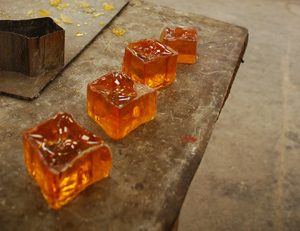The community of Las Gaviotas ('Gulls' in Spanish) is two days drive into the middle of nowhere.
Forty years ago a brilliant young dreamer, Paolo Lugari, decided that for once he wanted to see the sustainable dream made into reality, and while flying over the 'wet desert' of Los Llanos in his native Colombia was gripped by the vision that if you could live sustainably there you could do it anywhere. So, gathering a team of scientists, artists and indigenous Guahibo people, together they founded a community that has consistently achieved the impossible, innovating and adapting decade after decade.
Despite achieving an almost mythical status in the seventies and eighties, winning accolades and worldwide attention, Gaviotas has largely dropped off the sustainability radar, isolated by Colombia´s political violence. Until recently. I joined the first visit for years in March to see the remarkable place for myself.
Doing the impossible
Lugari is the undeniably charismatic founder of Gaviotas. A large-framed man, his solid features break easily into an infectious grin, betraying the childlike playfulness and enthusiasm that have driven him for over sixty years. Living in Bogota and based at the 'Centro Las Gaviotas' there, he is the community's connection to the outside world, its spokesman, fund-raiser and self-styled 'complexist'. His fondness for quoting Leonardo Da Vinci reflects his driving passion for thinking beyond established categories. His favourite saying, and perhaps a good summary of the Gaviotas philosophy, is 'AVV - alli vamos viendo' - 'we'll see as we go along'.
Gaviotas' early decades were a tornado of technological innovation. Conventional wisdom said the winds of Los Llanos were too light for turbines to work effectively. After 57 prototypes in the early 1970s, the community showed that this was false, achieving a ground-breaking windmill design made from simple, inexpensive materials. Its double-action pump can lift 5000 litres of water a day from a depth of twenty meters.
 |
| Paolo Lugari, founder of the Gaviotas community. Photo © Michael Buick |
A second piece of accepted wisdom - that hand water pumps could only draw water from a maximum depth of ten metres - was proven false when Gaviotas' engineers developed a clever sleeve pump that works like lifting water in a straw, from a depth of up to a depth of forty meters.
Some of the most brilliant innovations came from team members who had learnt their skills not at university but in the workshop. On the cusp of the nascent 'appropriate technology' movement, Gaviotas started to draw attention. Inspired by what it saw on a visit in 1976, the United Nations Development Programme designated Gaviotas a model community and provided funding to develop its designs and disseminate them internationally. The brilliant manuals for wind turbine and water pump construction read like comic books - technology by the people for the people.
The fortunes of oil
Its creative engineering was a reflection of the community as a whole. An 'all-archy', Gaviotas has no conventional hierachy. One year guerrillas arrived, guns in hand, demanding to know: 'which of you is in charge?'
'We all are,' was the reply as the community lined up. Asking the commandante if his men intended to take anyone hostage, he replied: 'No, our orders are not to touch anybody here. What you are doing is too valuable.'
Decisions are made collectively by consensus and not once in four decades has a memo been circulated or minutes taken. There is no police force. No official rule book.
Riding the wave of interest and changed economics that followed the 1973 oil shock, Gaviotas founded a factory in Bogota that employed street kids to manufacture its innovative solar water heaters. The Colombian president installed one on his roof and soon Gaviotas was involved with large scale building projects including Ciudad Tunal, a 5,500 unit apartment complex that remains one of the largest solar-water-heated constructions in the world. The distinctive spherical water tanks of the solar system soon popped up in cities all over Colombia and were duly nicknamed, 'Lugari's balls'.
Meanwhile, the world, queuing at the petrol pumps, was waking up to the instability of fossil fuels, and Gaviotas found itself in the vanguard of a new and very possible future. Yet we all know what happened next. The oil derricks found their rhythm once again and the new future dwindled into the distance. Gaviotas' ingenious solar technologies were suddenly no longer so exciting. Production fell. Salaries went unpaid. And growing violence between guerrillas and paramilitaries buried projections of community growth - some were even leaving in fear of their lives. It looked like the dream could end. But Lugari was pragmatic. 'What other people call problems we have to see as solutions,' he insisted, and this difficult time led to perhaps the most remarkable part of the Gaviotas story.
Pine salvation
The answer of how to adapt came, surprisingly, from the soils of Los Llanos. These, Lugari had been told, were so acidic and infertile that it would be impossible to grow anything useful there. 'The only deserts are the deserts of the mind,' Lugari had responded - and he would be proved right.
Gaviotas had experimented with crops for years without success, until Lugari returned from a visit to Venezuela with the suggestion that they try Caribbean Pine. This species looked promising, but it was only when the Gaviotans started to inoculate the roots with certain type of fungus - pizolithus tinctorius - that the trees really took. Forming mycorrhisas, the fungus allowed the pines to thrive, and, since the community had chosen not to clear around the trees (as is common in commercial forestry), the fungus reproduced naturally. At last the community had found a crop that would grow. They started to plant a forest without yet knowing exactly what it would provide. In 1994 they worked a heroic twenty-four days round the clock to plant a million trees before the rains ended. With funding half from Japan (based on carbon sequestration) and half from their own savings (from the solar water heater sales) they planted a whopping 8000 hectares without knowing exactly what the trees would provide.
 |
| Cubes of pine tree resin in the Gaviotas factory. Photo © Michael Buick |
Their faith was rewarded. In the following years, as their solar business withered, they discovered that that the resin of the pines could be sustainably harvested and processed into 'colofonia', a high value raw material used in all sorts of products from paints to make-up. A neat little finger of bark is stripped and plastic bag stapled below to catch the resin. Stepping into the factory I watched Gaviotans unloading a trailer of the resin-filled bags into a series of shiny steel tanks, at the end of which a masked worker used a hose to deposit the hot resin in boxes. The factory also holds the world's first pine biodiesel plant that supplies the Gaviotas tractors with fuel.
In a further twist, the Gaviotans discovered that their pines where sheltering the rebirth of the rainforest. Over 180 native species sprung up, blurring the neat rows and filling the forest with wildlife. Through determination and creativity, Gaviotas now has a sustainable harvest while regenerating an ancient forest ecosystem not seen on Los Llanos for millenia. No wonder Lugari's most passionate refrain is our need to repair what he calls 'the vegetable skin of the earth' - and the belief that it could be done. There are 250 million hectares of similar land in South America alone - why not reforest it all, asks Lugari, producing sustainable harvests of biofuel and materials, soaking up carbon and ultimately restoring an ecosystem?
Gaviotas continues to be an inspiration to the world. This tiny community, nestled in a tropical forest of its own making, declares that another way is possible, that we could survive if we we chose to, that 'the only deserts are the deserts of the mind'. Do we have enough time to halt runaway climate change; enough support to change our politics; enough land to feed the world without fossil fuels? To these questions Lugari does not claim to have clear answers, but he's sure of one thing: 'The real crisis isn´t a lack of resources: It's a lack of imagination'.
Michael Buick is a freelance writer currently travelling through Latin America visiting sustainable communities and publishing their stories at www.growingwiser.net
Useful links
Las Gaviotas
| READ MORE... | |
 |
HOW TO MAKE A DIFFERENCE 10 steps to creating your own local currency Local currencies ensure that money spent at local shops gets reinvested in the community and fosters community spirit and involvement. Learn all you need to know to get one started in your area... |
 |
HOW TO MAKE A DIFFERENCE Why hand-weaving is a technology for the 21st century Far from being drudgery, weaving without a machine is, for many Indians, a route to emancipation and financial independence |
 |
HOW TO MAKE A DIFFERENCE How to make a solar water heater from plastic bottles Retired mechanic Jose Alano invented a simple, cheap, energy saving rooftop solar water heater which is benefiting thousands of people. Here's how it's done... |
 |
HOW TO MAKE A DIFFERENCE CASE STUDY: Growing coffee more sustainably in Costa Rica It's not organic but ‘pro-environmental sustainable' farming practices could help coffee farmers move away from damaging industrial monoculture |
 |
INVESTIGATION Learning from remote, sustainable communities Being off the beaten track need not require lashings of fossil fuels to provide a comfortable lifestyle. James Morrison tells the remarkable story of the inhabitants of Scotland's Knoydart Peninsula |





